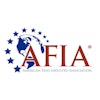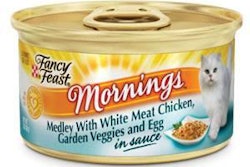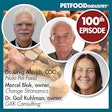This site and Petfood Industry magazine often highlight reports from Euromonitor International, Research and Markets and others indicating the continued growth of the global -- or, in reports from Packaged Facts, the US -- petfood market, despite ongoing economic crises and slow recovery from the recession.
So, it was somewhat surprising to see a recent report from IBISWorld saying dry petfood production in the US declined 1.9% on an annualized basis in the five years leading up to 2012. Apparently, we were not the only ones surprised, because I have since received a few emails from people in the industry asking if I can explain the discrepancy between this report and all the others showing growth in petfood.
Unfortunately, I do not have a firm explanation; we do not have access to the full report, and IBISWorld does not give any information on the methodology used in its research or even on what exactly it measured. However, I can make an educated guess.
I believe the answer lies in the word "production" in the report's title. In other words, IBISWorld measured the volume of dry petfood produced in the US, then somehow assigned a dollar value to it.
If that's the case, then this report does correspond more closely with data from other research firms. For example, in the US pet specialty channel (pet stores and shops, farm and feed stores and veterinary clinics), GfK says the volume of dry dog food in pounds increased 1.9% from May 2011 to April 2012, while dry cat food volume increased only 0.7%. (Go to this article, click on the "More Images" tab at the top, then scroll down to Figure 5.) So, very slight increases, which may have been offset by declines in other retail channels.
Similarly, data from Euromonitor at the end of 2011 showed volume in metric tons of petfood sold in North America grew less than 1% over the previous year, with dog food at 0.97% and cat food at 0.91%. (I don't have the breakdown by type of product, dry versus wet.)
Since the recent recession, much of the sales growth in petfood in developed regions like the US has come from price increases as manufacturers have tried to recoup their rising costs (for ingredients, fuel and the like) and from the fact that most of the growth has occurred in categories such as premium, superpremium, natural, organic, etc. -- all segments in which the products carry a higher retail price. That explains why the GfK data also shows value sales growth of dry dog food in the US from May 2011-April 2012 of 7.7% (compared to that slight 1.9% increase in volume) and a 4.7% rise in dry cat food value sales (compared to the 0.7% uptick in volume).
There is a cautionary tale here for our industry if we celebrate all the positive reports showing petfood value sales growth. As one of the people who emailed me asked: "Is it fair to compare value and not take volume into account? For me, volume growth related to the relevant pet populations tells me more about market developments than market growth in price." For instance, he said, price inflation also plays a role in faster-growing petfood markets such as Russia and Brazil.
He also pointed out that most investment plans in the industry are based on volume; an equipment supplier does not sell an extruder, for example, to a petfood company with a US$20,000 per hour output; rather, the supplier will say the machine can put out 20 tons an hour. "What I do know is that dollars tend to inflate, whereas tons don't," he said.


















